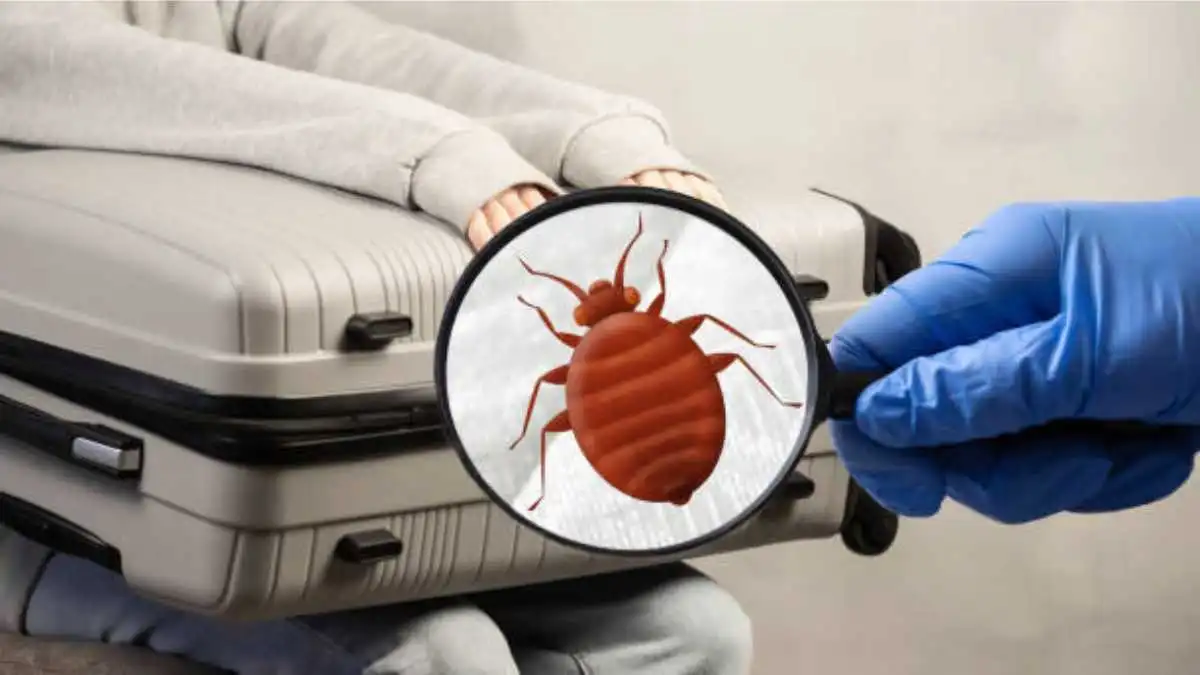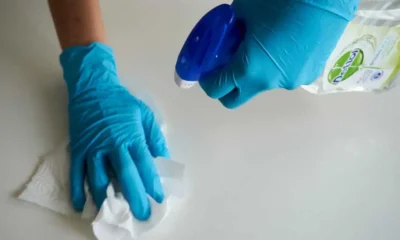GENERAL
Bed Bugs: How to Identify, Eliminate, and Prevent Reinfestation

Bed bugs are among the most dreaded pests in any household, infesting bedrooms, hiding in tiny crevices, and feeding on human blood while we sleep. These pests are not only a nuisance but can also cause allergic reactions and skin irritations. Effective bed bug control requires early identification, thorough elimination, and vigilant prevention measures to avoid reinfestation. In this guide, we’ll cover how to identify bed bugs, eliminate an infestation, and prevent these pests from returning, with insights into when it’s best to seek help from professionals like Agile Pest Control.
Table of Contents
Recognizing Bed Bugs and Their Signs
Bed bugs are small, reddish-brown insects with flat, oval bodies. They are typically no larger than an apple seed, making them difficult to spot, especially in the early stages of an infestation. Identifying these pests quickly is crucial for controlling the spread and minimizing the discomfort they cause.
What Do Bed Bugs Look Like?
- Size: Adult bed bugs are around 5-7 millimeters long.
- Color: They are brown or reddish-brown, becoming redder after feeding.
- Shape: Bed bugs have flat, oval-shaped bodies with six legs and no wings.
- Location: Bed bugs are commonly found in bedding, mattresses, furniture, and small crevices close to where people sleep.
Signs of a Bed Bug Infestation
Even if you don’t see bed bugs directly, certain signs can indicate their presence:
- Bite Marks: Bed bug bites often appear as red, itchy welts, usually in a straight line or cluster on exposed skin.
- Blood Stains: Small blood stains on sheets and pillowcases may result from bed bugs being crushed during sleep.
- Fecal Spots: Bed bugs leave behind dark, rust-colored spots on mattresses, bedding, and nearby furniture.
- Shed Skins: As bed bugs grow, they shed their skins. Look for these small, translucent exoskeletons near bedding and mattress seams.
- Sweet, Musty Odor: A large infestation can produce a sweet, musty smell in the affected area.
Steps for Eliminating Bed Bugs
Getting rid of bed bugs requires a strategic approach, as these pests are skilled at hiding and reproducing quickly. Here’s how to tackle a bed bug infestation effectively:
1. Prepare the Area
Before starting treatment, prepare the infested area to maximize the effectiveness of your efforts.
- Declutter: Remove unnecessary items from the affected area, being careful not to spread bed bugs to other rooms.
- Seal and Wash Bedding: Place all bedding, linens, and washable fabrics in sealed plastic bags. Wash these items on the highest heat setting, then dry them on high heat to kill any bed bugs and their eggs.
- Empty Drawers and Closets: If bed bugs are in dressers or closets, remove clothing and other items, wash what’s washable, and store everything in sealed plastic bags until the infestation is cleared.
2. Treat Infected Areas
There are several treatment options for eliminating bed bugs. Combining methods often yields the best results.
Vacuuming
- Steps: Use a powerful vacuum cleaner with a hose attachment to vacuum mattresses, box springs, furniture, and all cracks and crevices where bed bugs may hide.
- Aftercare: Immediately empty the vacuum bag into a sealed plastic bag and dispose of it outside to prevent any bed bugs from escaping.
Steaming
- Steps: Bed bugs are sensitive to high temperatures. Use a steam cleaner on furniture, mattresses, and any other surfaces where bed bugs may hide. Ensure the steam penetrates deeply into cracks and seams.
- Benefits: Steaming effectively kills bed bugs and their eggs without the use of chemicals, making it a safe choice for families and pets.
Insecticides
- Types: Insecticides labeled specifically for bed bugs are available in sprays, powders, and aerosols.
- Application: Apply insecticides to areas where bed bugs hide, including cracks, baseboards, and under furniture. Follow product instructions carefully, and take safety precautions.
- Safety: Always use insecticides according to the manufacturer’s instructions, and avoid overuse. Some chemicals can be harmful to humans and pets if not used properly.
3. Encase Mattresses and Box Springs
Encasing mattresses and box springs in zippered covers traps any remaining bed bugs inside and prevents new ones from finding a home. Look for bed bug-proof encasements that are specifically designed to keep pests in or out.
- Benefits: Encasements prevent bed bugs from entering or leaving the mattress, effectively starving any bugs that remain.
- Installation: Place encasements on all mattresses and box springs in the home, and keep them sealed for at least a year to ensure complete elimination.
4. Repeat the Treatment
Because bed bug eggs can hatch after initial treatment, it’s essential to continue monitoring and treating the affected area. Vacuum regularly, check for signs of bed bugs, and repeat steam treatments or insecticide applications if necessary.
Preventing Bed Bugs from Reinfesting Your Home
Once you’ve cleared out an infestation, taking preventive steps can help ensure bed bugs don’t return. Here are some practical measures to keep bed bugs at bay:
1. Inspect Secondhand Furniture and Clothing
Bed bugs can easily hitch a ride on secondhand items. Before bringing any used furniture, mattresses, or clothing into your home, inspect them thoroughly for signs of bed bugs.
- Furniture: Examine all crevices, seams, and undersides of furniture for eggs, droppings, or bugs.
- Clothing: Wash and dry all secondhand clothing on high heat before wearing or storing it.
- Mattresses and Bedding: Avoid bringing secondhand mattresses or bedding into your home, as they are common hiding places for bed bugs.
2. Be Cautious During Travel
Hotels, vacation rentals, and public transportation can all be sources of bed bugs. Being cautious while traveling can prevent you from bringing bed bugs home.
- Inspect Hotel Rooms: Upon arrival, check the bed, headboard, and nearby furniture for signs of bed bugs. Keep your luggage off the floor and on a luggage rack.
- Seal Luggage: Use plastic bags or protective covers for your luggage to prevent bed bugs from hitching a ride.
- Wash Clothing After Travel: After returning from a trip, wash and dry all clothing on high heat to eliminate any potential bed bugs.
3. Regularly Inspect Your Home
Regular home inspections can help you catch a bed bug infestation early, making it easier to control. Check common hiding places periodically, especially if you’ve recently traveled or purchased secondhand items.
- Check Beds and Furniture: Inspect mattresses, box springs, bed frames, and nearby furniture for any signs of bed bugs every few months.
- Look in Uncommon Areas: Bed bugs can hide in electrical outlets, behind picture frames, and even inside electronic devices. Be thorough during inspections.
- Monitor Frequently Used Rooms: Bed bugs are most commonly found in bedrooms and living rooms. Pay extra attention to areas where you and your family spend a lot of time.
When to Seek Professional Help
Bed bugs are notoriously difficult to eliminate, and some infestations require professional intervention. If you’ve tried DIY methods without success or are dealing with a severe infestation, it’s time to call in professionals like Agile Pest Control. Pest control experts have access to specialized equipment and treatments that effectively eliminate bed bugs and prevent them from returning.
Signs You Need Professional Assistance
- Persistent Infestation: If bed bugs keep reappearing despite your efforts, a professional treatment plan may be necessary.
- Large-Scale Infestation: Severe infestations are challenging to handle alone. Pest control services provide comprehensive solutions to eradicate large colonies.
- Health Concerns: For those with allergies or other health concerns, professional pest control ensures thorough elimination with minimal risk.
Conclusion
Bed bugs are a challenging pest, but with diligent efforts, you can successfully eliminate and prevent them. By learning how to recognize bed bugs and their signs, implementing effective treatment strategies, and adopting preventive measures, you’ll be well-equipped to keep your home bed bug-free. If the infestation persists, don’t hesitate to reach out to professionals like Agile Pest Control for expert assistance. Protecting your home from bed bugs not only ensures a comfortable, restful environment but also safeguards your family’s health and peace of mind.
-

 GENERAL2 months ago
GENERAL2 months agoUncovering the World of кинокрадко: The Dark Side of Film Piracy
-

 GENERAL1 month ago
GENERAL1 month agoUnveiling the Art of преводсч: How Translators Bridge Language Barriers
-

 GENERAL3 weeks ago
GENERAL3 weeks agoChristofle – For Those Who Dream of Family Heirloom Silver
-

 YOGA1 year ago
YOGA1 year ago4 Person Yoga Poses for Beginners


























